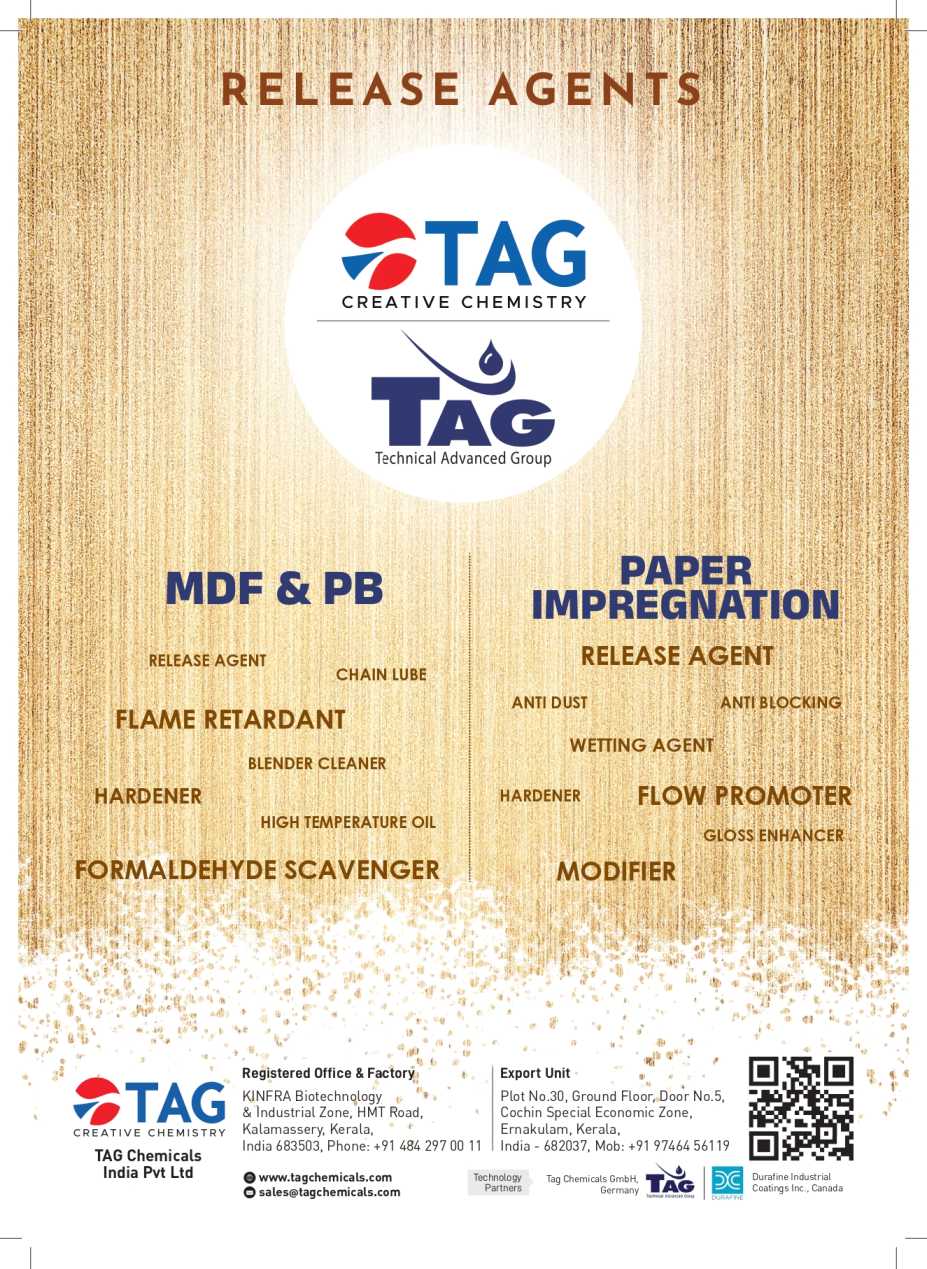
Duplicate Products and Their Impact – Nikita Bansal, Century Ply
- March 14, 2023
- 0
“If the heart fails, the body collapses.”
‘‘अगर दिल विफल हो जाता है, तो शरीर ढह जाता है।’’
Beware of fakes! That’s the caution one must heed.
A consumer can choose from a plethora of products in this age of consumerism. With e-commerce emerging as a strong option of shopping, prices offered by brands are competitive as well. Attracting a buyer is the key challenge and pricing is one of the weapons adopted to fight the competitive war.
One might plan to buy a TV set, a fridge or even buy a new sofa set to redo the home-décor. So the consumer is likely to scan an entire array of offerings available in the marketplace, including e-commerce platforms, before deciding on the brand to buy. And, understandably, besides the product specifications, the criterion that considerably influences one’s choice is the product price.
There is a possibility that while selecting an item of one’s choice, it is found that the item costs significantly less. While it looks good, it is exciting too since the price more than suits one’s pocket. And decision is made to goa head with the purchase.
But hold back for a while. Are you sure you are buying genuine stuff? Are you quite certain that the product isn’t fake, a replica of more expensive goods offered by reputed manufacturers? Have you have wondered why the stuff costs so much less?
Some manufacturers are notorious for branding their items with the name of a leading manufacturer to fool customers. It’s been happening with any and every product in the market. Think of the havoc wreaked by fake Covid-19 medicines and vaccines in the recent past. One would not be paying unless one is convinced that the product is genuine.
Fake products are quietly making their way onto the shelves of showrooms. The problem is especially pronounced where brands are sold from third-party outlets and not from a company’ exclusive showroom or website. This has been observed a worldwide phenomenon, and India is no exception. The difference between a genuine and fake product is so subtle that it is hard to make out. A customer’s responsibility is to choose stores and e-commerce platforms and sellers that are authorised by a genuine brand to ensure buying authentic products.
The fact is that a product that does not meet the quality standards will be considered a duplicate or fake. Take a piece of furniture, for instance. Everything looks right about it and, going by the price, it would be a great buy. But the raw materials that have gone into the finished product may not be of the desired standard. The polish and the paint or the fabric of the cushion material may not match the quality of the ingredients used by a reputed company. It would only be a matter of time before the substandard materials begin to show up.
A genuine furniture on the other hand is protected against borers and termites, has antibacterial properties, offers greater longevity, is waterproof and fire retardant. Any genuine product is dependable as they offer safety, performance and longevity.
It is already well known that the procuring of raw materials, production and sales by inauthentic manufacturers leads to evasion of taxes, creating a dent in the Indian economy. Additionally, the duplicates are not manufactured in accordance with the rules and
regulations laid down by the Government such as the BIS standards. Hence, starting from the manufacturing process to the substandard product, they affect the environment because of an unsustainable process chain.
The way to tackle this menace is through technology that gives customers the power to identify and discard duplicates. Technology can be used to check the duplicates. Usage of an appropriate technology can be an assurance to the customers that they are investing their hard-earned money in the right product.
डुप्लिकेट उत्पाद और उनका प्रभावः
ग्राहकों को प्रामाणिकता की तलाश क्यों करनी चाहिए
बनावटी से सावधान! यह सावधानी जरूर बरतनी चाहिए।
उपभोक्तावाद के आज के इस युग में उपभोक्ता ढेर सारे उत्पादों में से चुनाव कर सकता है। खरीदारी के एक मजबूत विकल्प के रूप में उभर रहे ई-कॉमर्स के साथ, ब्रांडों द्वारा दी जाने वाली कीमतें भी प्रतिस्पर्धी हैं। खरीदार को आकर्षित करना एक प्रमुख चुनौती है और प्रतिस्पर्धी युद्ध लड़ने के लिए मूल्य निर्धारण अपनाए गए हथियारों में से एक है।
घर की साज-सज्जा को नया रूप देने के लिए कोई टीवी सेट, फ्रिज या नया सोफा सेट खरीदने की योजना बना सकता है। इसलिए उपभोक्ता द्वारा किसी ब्रांड को खरीदने का निर्णय लेने से पहले ई-कॉमर्स प्लेटफॉर्म सहित बाज़ार में उपलब्ध पेशकशों की एक पूरी श्रृंखला को स्कैन करने की संभावना है। और, जाहिर है, उत्पाद विनिर्देशों के अलावा, कोई मानदंड जो किसी की पसंद को काफी प्रभावित करता है वह उत्पाद की कीमत है।
पूरी एक संभावना है कि अपनी पसंद की वस्तु का चयन करते समय यह पाया जाए कि वस्तु की कीमत काफी कम है। जबकि यह अच्छा भी दिखता है, और यह रोमांचक भी है क्योंकि इसकी कीमत आपकी जेब के मुताबिक है। और खरीदने का फैसला कर लिया जाता है।
लेकिन कृपया थोड़ी देर रुकें। क्या आप वाकई असली सामान खरीद रहे हैं? क्या आप निश्चित हैं कि उत्पाद नकली नहीं है, प्रतिष्ठित निर्माताओं द्वारा पेश किए जाने वाले अधिक महंगे सामानों की प्रतिकृति तो नहीं है? क्या आपको आश्चर्य नहीं हुआ कि सामान की कीमत इतनी कम क्यों है?
कुछ निर्माता ग्राहकों को मूर्ख बनाने के लिए किसी प्रमुख निर्माता के नाम से अपनी वस्तुओं की ब्रांडिंग करने के लिए कुख्यात होते हैं। यह बाजार में किसी भी और बहुत से उत्पादों के साथ हो रहा है। हाल के दिनों में नकली कोविड-19 दवाओं और टीकों के कहर के बारे में सोचें। कोई तब तक भुगतान नहीं करेगा जब तक कि आश्वस्त न हो कि उत्पाद वास्तविक है।
नकली उत्पाद चुपचाप शोरूम की अलमारियों पर अपना स्थान बना रहे हैं। समस्या विशेष रूप से वहां अधिक दिखती है जहां ब्रांड तीसरे पक्ष के आउटलेट से बेचे जाते हैं, न कि किसी कंपनी के विशेष शोरूम या वेबसाइट से। यह एक विश्वव्यापी घटनाक्रम है, और भारत कोई अपवाद नहीं है। असली और नकली उत्पाद में इतना कम अंतर होता है कि पहचानना मुश्किल होता है। एक ग्राहक की जिम्मेदारी हो जाती है, कि वह उन स्टोर और ई-कॉमर्स प्लेटफॉर्म और विक्रेताओं को चुने जो प्रामाणिक उत्पादों की खरीद सुनिश्चित करने के लिए वास्तविक ब्रांड द्वारा अधिकृत हैं।
वस्तुतः एक उत्पाद जो गुणवत्ता मानकों को पूरा नहीं करता है उसे डुप्लिकेट या नकली ही माना जाएगा। उदाहरण के लिए, कोई फर्नीचर लें। इसमें सब कुछ सही दिखता है और कीमत के हिसाब से यह एक शानदार खरीदारी होगी। लेकिन जो कच्चा माल तैयार उत्पाद में उपयोग किया गया है वह वांछित स्तर का नहीं हो सकता है। पॉलिश और पेंट या कुशन का कपड़ा एक प्रतिष्ठित कंपनी द्वारा उपयोग की जाने वाली सामग्री की गुणवत्ता से हल्का हो सकता है।
सामग्री का घटियापन दिखाई देने में केवल कुछ समय की बात होगी। दूसरी ओर एक असली फर्नीचर बोरर और दीमक से सुरक्षित होता है, इसमें जीवाणुरोधी गुण होते हैं, अधिक दीर्घायु प्रदान करते है, जलरोधी (वाटरप्रुफ) और अग्निरोधी होते हैं। कोई भी सच्चा उत्पाद भरोसेमंद होता है क्योंकि वे सुरक्षित, व्यवहारिक और दिर्घायु होते है।
यह सर्वविदित है कि अप्रामाणिक विनिर्माताओं द्वारा कच्चे माल की खरीद, उत्पादन और बिक्री से करों की चोरी होती है, जिससे भारतीय अर्थव्यवस्था में सेंध लगती है। इसके अतिरिक्त, डुप्लिकेट माल तय नियमों जैसे सरकार द्वारा निर्धारित बीआईएस मानक के अनुसार निर्मित नहीं होते हैं। इसलिए, निर्माण प्रक्रिया से लेकर घटिया उत्पाद बनाने तक, वे एक अस्थिर प्रक्रियागत श्रृंखला के कारण पर्यावरण को भी प्रभावित करते हैं।
इस खतरे से निपटने का तरीका उन प्रौद्योगिकी के माध्यम से है जो ग्राहकों को डुप्लीकेट को पहचानने और त्यागने की शक्ति देता है। नकल की जांच के लिए तकनीक का इस्तेमाल किया जा सकता है। एक उपयुक्त तकनीक का उपयोग करके ग्राहक एक भरोसा पा सकते हैं कि वे अपनी मेहनत की कमाई को सही उत्पाद में निवेश कर रहे हैं।


































































